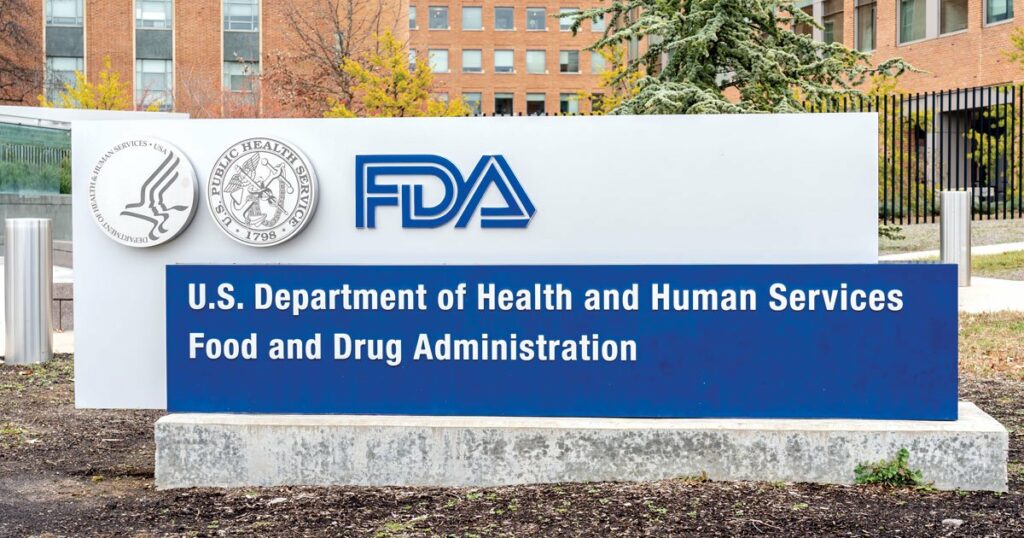The FDA takes steps to promote faster access to new medical technologies that are safe and effective: Streamlining premarket procedures, modernizing the 510(k) program, expediting programs for devices that enhance safety and/or resolve critical unanswered medical needs. The recently issued guides include new pathways, expansion of existing programs, and supporting tools such as checklists and assessment worksheets.
Topics in this Newsletter
510(k) Programs
1. Special 510(k) (UPDATED)
2. Abbreviated 510(k) (EDITED CONTENT)
3. Safety & Performance Based Pathway (NEW)
Additional Premarket Programs
4. Humanitarian Device Exempt (HDE) Program (UPDATED)
5. Safer Technology Program (STeP) (NEW)
More FDA Actions
6. Electronic submissions;
7. Benefit-risk determinations;
8. Acceptance review policy (RTA);
9. Accreditation of testing labs (ASCA)
Adapting the repeatedly criticized 510(k) program to advances in safety and technology; providing clearer requirements and more timely review & response, and lowering workload for FDA and costs for the industry.
Let’s take a short tour of some of the ideas and changes that these documents bring about.
What’s new with the 510(k) program?
The 510(k) program accounts for the vast majority of devices that enter the market each year. It is based on the concept of “substantial equivalence”. The FDA now issues final guidance documents for the Special 510(k) Program, the Abbreviated 510(k) Program, and the Safety and Performance Based Pathway, as well as a Format for Traditional and Abbreviated 510(k)s.
1. The special 510(k) program
This program is intended specifically for changes of own existing device, and only if the methods to evaluate changes are considered well established. FDA reviews special 510(k) applications within 30 days of submission. This final guidance expands the scope of the program.
The significant changes in the program:
• Now, under certain circumstances, changes to the intended use may be made.
• Now, under certain circumstances, changes that alter the fundamental scientific technology may be made.
• If performance data is necessary, it is required that methods are well established and that all data supporting substantial equivalence can be reviewed in a summary or risk analysis format.
NOTE: This pathway therefore may NOT be appropriate,
for example, when a novel sterilization method is used; or methods rely on animal/clinical data; or the changes are complex – with many scientific disciplines involved, change from single-use to re-usable, etc. – so that determining the substantial equivalence depends on the FDA’s interpretation of the underlying data.
2. The abbreviated 510(k) program
An alternative approach to the traditional 510(k): Instead of performing a “head-to-head” comparison with a predicate device in order to demonstrate the substantial equivalence, you declare conformity to voluntary consensus standards / special controls / FDA guidance.
This program is NOT new, but merely received a guidance document separate from the special 510(k) program. It includes a short outline of the content required.
NOTE: This pathway is not necessarily “abbreviated” or shorter.
Also, the review time is 90 days, as for the traditional 510(k). However, under some circumstances, when it is difficult to collect data regarding a predicate, it might be more efficient to submit summary reports describing how to reference standards were used or how the device complies with the special controls. Addressing the FDA early to find out which pathway is appropriate, would be a good idea.
3. Safety and Performance Based Pathway
An optional submission pathway, an extension of the abbreviated program. It is intended for well-understood devices, listed by device type, for which the manufacturer would have to meet objective criteria set by the FDA: criteria that would be consistent with safety and performance characteristics of modern predicates. Along with the guide describing the general pathway, five additional draft guidance documents were issued, describing the required performance criteria for specific devices:
Foley catheters
Recording cutaneous electrodes 03Ø06
Orthopedic spinal plating systems
Non-spinal screws & washers
Magnetic resonance (MR) coils
The basics you should know about this pathway:
• It’s not actually different from the abbreviated 510(k).
• The requirements may be more specific, thus clearer to the
manufacturer (that’s a bonus).
• May be suitable when attaining information regarding an
the actual predicate is impossible/impractical.

Additional programs and pathways at focus :
4. The Humanitarian Device Exemption (HDE) Program
HDE program receives updated final guidance, accompanied by the newly revised guidance for Humanitarian Use Device (HUD) Designations. Both follow changes resulting from the “Cures Act”.
The purpose of this program is to encourage the development of devices for the diagnosis and treatment of rare medical conditions.
The main updates:
• Expansion of the HUD designation: The designation is given when the relevant population is up to 8000 individuals per year in the USA, instead of the previous threshold of less than 4000.
• A device may still receive HUD designation in the pediatric population even when the total condition population exceeds 8000 patients if the pediatric population affected does not exceed 8000 patients.
• For diagnostic devices, the threshold applies to not more than 8000 who would be subjected to the diagnosis with the device, including positive and negative results.
• As was before, in order to make use of an approved HUD in patients, oversight of an Institutional Review Board (IRB) in the medical facility is required, and review and approval for the specific individual use are also required. This was previously also required to be performed by the IRB. Now more flexibility is introduced, as an appropriate local committee (ALC), that may be a standing committee with the appropriate expertise, is allowed to review and approve the specific HDE use, and not only the IRB, which may be considered less accessible. IRB facility overview is still required.
• A filing checklist, and tools for the probable benefit-risk assessment are included in the appendices.
5. Safer Technology Program for Medical Devices (STeP)
More action in promoting patient safety:
The draft guidance for this new voluntary program is issued
– complementary to the “Breakthrough Device Program” (BDP), for medical devices that are expected to significantly improve the safety of currently available treatments.
Devices and device-led combination products, that are subject to review under 510(k), De Novo, or Premarket Approval (PMA) submissions, and that are not eligible for the BDP, may enjoy the expedited STeP approach:
• First apply through a Q-submission (pre-sub) to be included in the program;
• Once accepted, go through a prioritized and expedited review of regulatory submissions, with senior FDA management engagement, and assistance with the plan of device and data development.
To apply, the sponsor should explain the innovative approach and how the benefit-risk profile would be improved:
• Does the device reduce the occurrence of a known serious adverse event/device failure mode / user-related hazard or error?
• Does the device improve the safety of another device or intervention?
NOTE: The Breakthrough program which is intended for life-threatening
/ irreversibly debilitating conditions, is mandated by law and would still be prioritized over STeP. This is expressed in the draft with the repeating phrase: “as resources permit”.
Thus, only time will tell if STeP achieves its purpose to open an actual additional expedited pathway.
More FDA actions to streamline, simplify, expedite, clarify…
6. The FDA goes paperless – electronic submissions are on the way
Following the requirements of the FD&C Act, draft guidance regarding electronic submissions was issued. But don’t get rid of your printers just yet – it will take a little while.
The guidance tells us that:
• Application types that would be required to be submitted solely in an electronic format, include 510(k), PMA, De
Novo, Investigational Device Exemption (IDE), HDE, and more.
• Individual, per-type guidance documents will be developed, specifying required formats and implementation timetable.
• IDE compassionate use requests and adverse event reports will be exempt from this requirement.
ATTENTION: In contrast to most guidance documents, which contain nonbinding provisions, this guidance and the following
individual ones – once finalized, will contain both nonbinding AND binding provisions under the statutory authorization of Congress: I.e., sponsors will be required by law to comply with the specified formats & schedules.
7. Clarifying benefit-risk considerations for higher-risk submissions
Two final guides were issued (1, 2), both actually discuss the same subject: determining uncertainty and benefit-risk in PMA, HDE, De Novo, and BDP submissions.
Some key concepts:
• Greater uncertainty may be accepted when there’s a true clinical need: serious/unanswered/small patient population / high anticipated benefit for quick patient access.
• Higher uncertainty greater need for premarket data; Lower uncertainty data shift to post-market may be allowed.
• Post-market data is always required. It is critical to show that it can be collected in a timely manner, especially as risk/ uncertainty increases.
• A new worksheet is provided as an appendix; Recommended as a basis for the benefit-risk assessment process.
• FDA wants patient perspectives – are the patients really willing to accept the risk and the uncertainty?
8. Saving time for FDA reviewers and for sponsors
– acceptance review policy
Final updated “Refuse to Accept” (RTA) guidance was issued for 510(k) and for De Novo submissions. These outline the preliminary procedure the FDA performs to assure administrative completeness of submissions (including timetable), which takes place before the substantive review that assesses the quality of the information.
Some highlights:
• A checklist of required criteria is provided for each submission type (in the appendices).
• FDA will, within 15 days of submission, electronically notify the submitter if: (a) submission was accepted and under substantive review;
(b) the submission was refused PLUS indication of the missing checklist items, or;
(c) FDA did not complete acceptance review on time, thus transferred
submission to substantive review.
• This notification identifies the lead FDA reviewer assigned for the submission.
• The De Novo guidance includes a recommended content checklist as well, relevant also for the substantive review.
• RECOMMENDED: Follow the checklist, complete it, and include it as part of the application. Do NOT leave sections out (if not applicable – a state so & justify). Letters from subject matter experts are helpful.
9. Accelerating review processes by accrediting testing labs to FDA-recognized standards
Draft guidance for The Accreditation Scheme for Conformity Assessment (ASCA) Pilot Program was issued.
OBJECTIVE: Streamline reviews – once a manufacturer presents results from an accredited body, FDA can accept them without a thorough review. The pilot begins with standards for biological evaluation and for electric safety.
Gsap experts will be happy to assist you in choosing the regulatory track!
suits your product and company, and to support you in the submission process.
This Newsletter Prepared by:

Orly Chillag – Talmor, Ph.D.
Quality & Regulatory Project Coordinator
